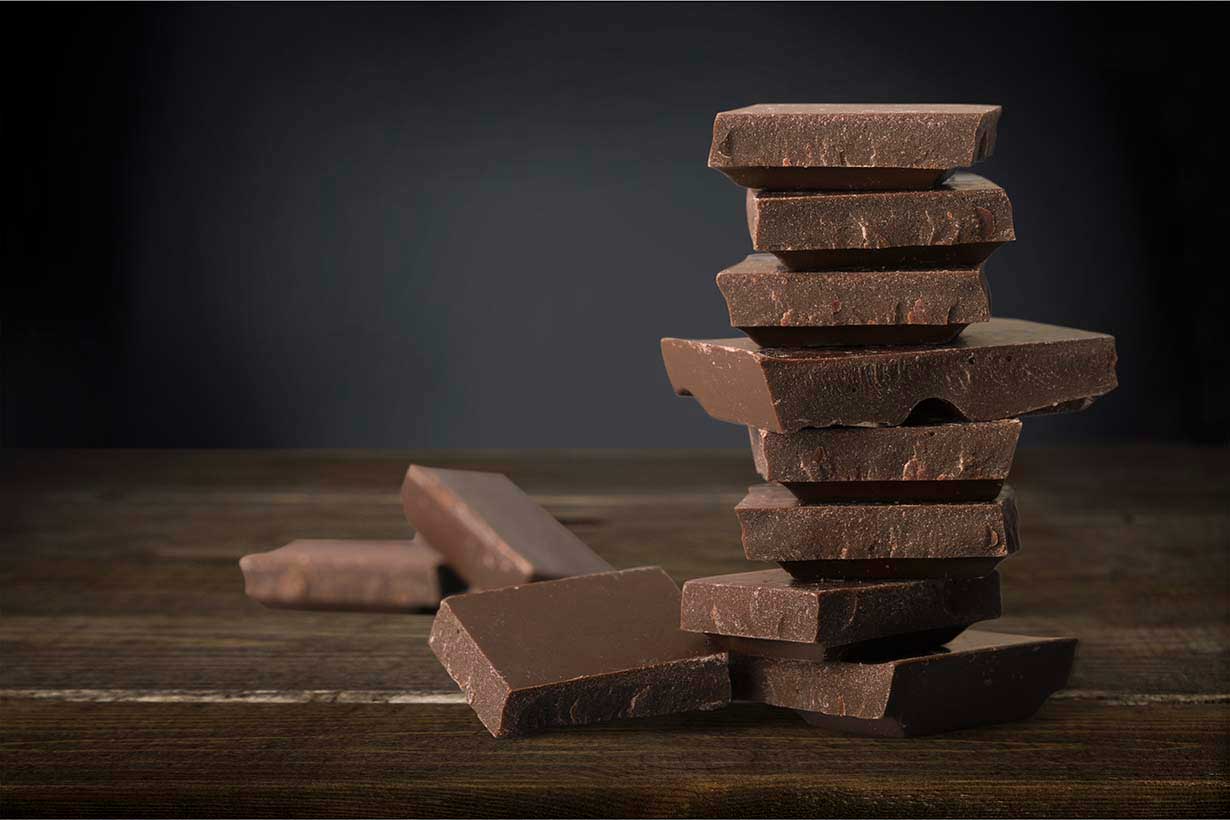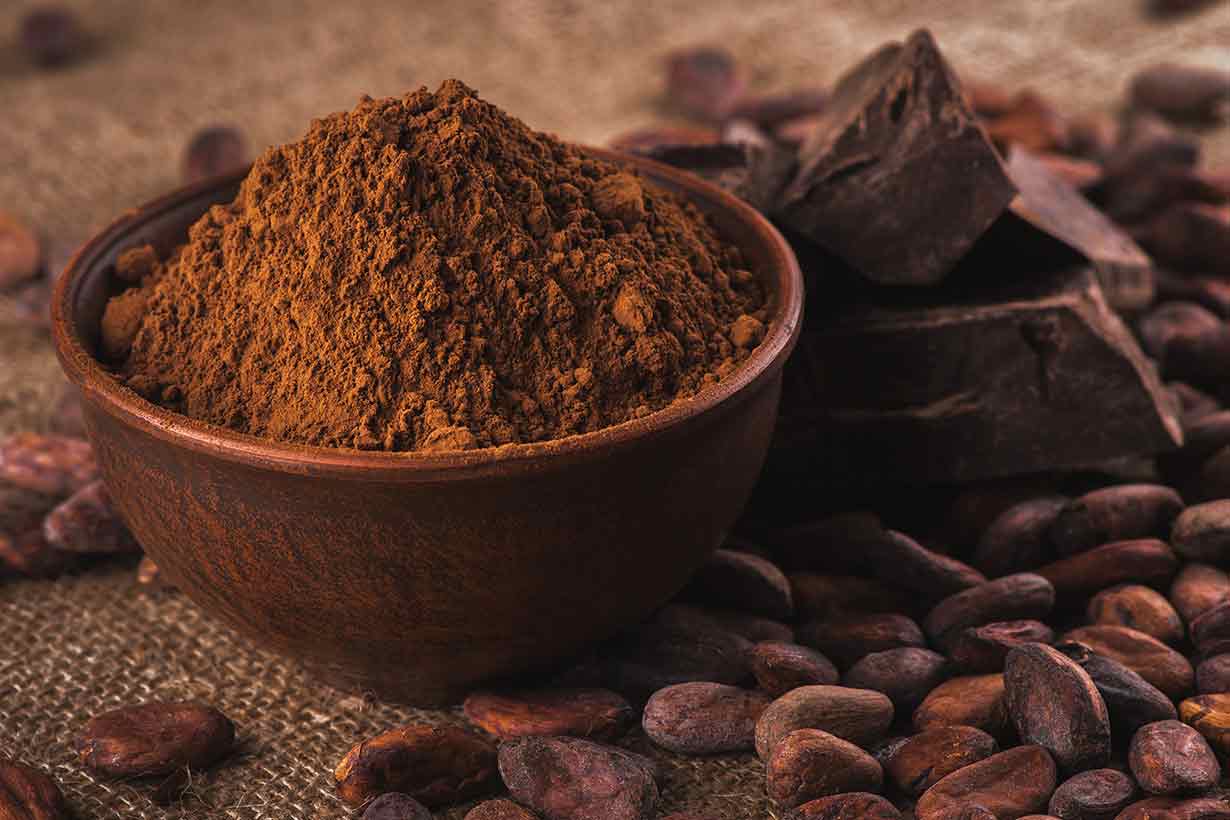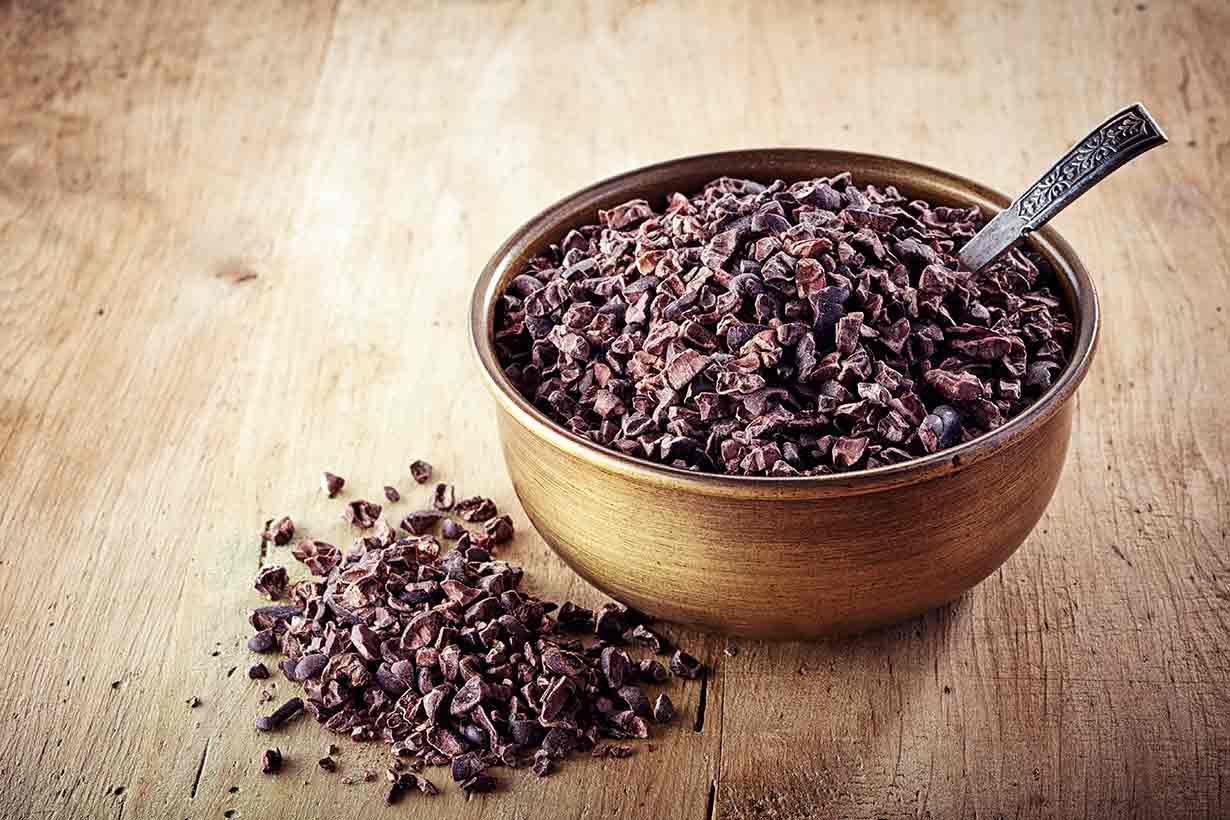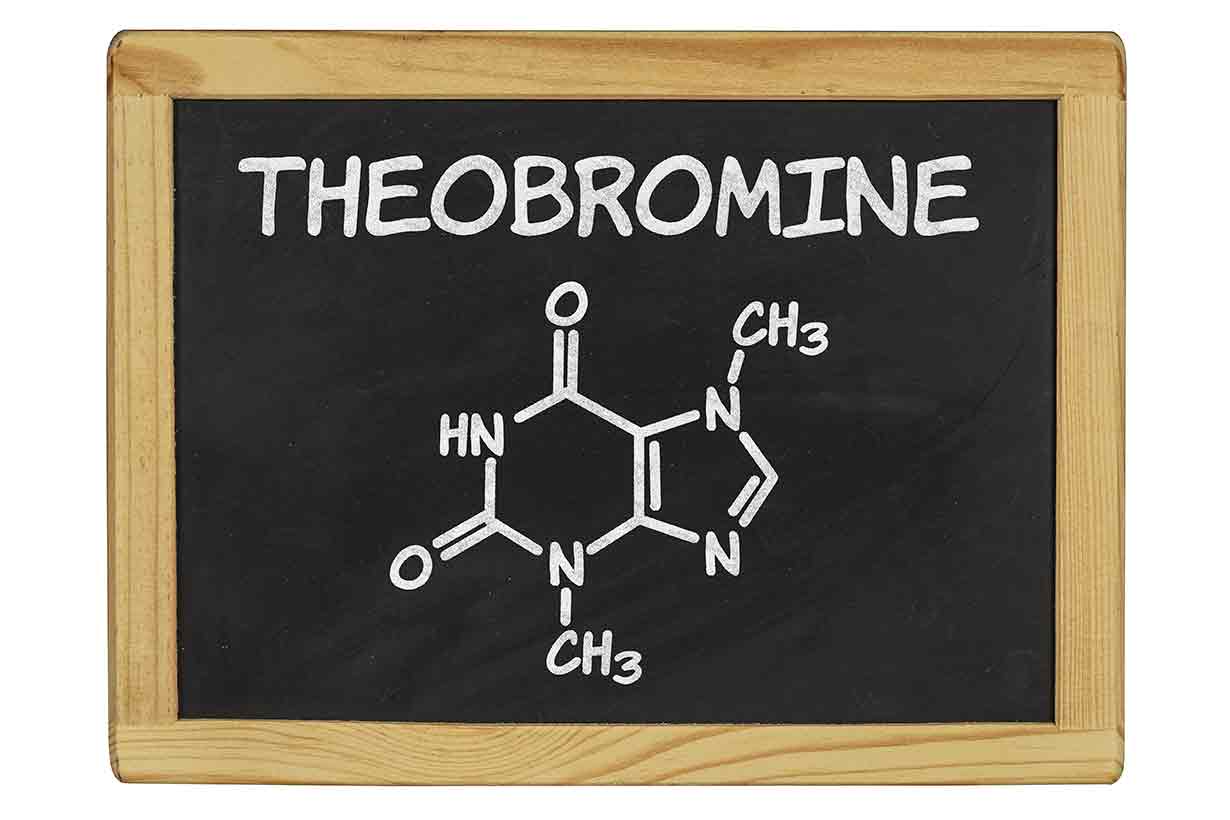Dark chocolate is one of the most enjoyable and popular foods.
It has also been in the media all week thanks to a Consumer Labs report that tested the contents of 28 popular dark chocolate bars.
These tests showed that a significant proportion of dark chocolate was contaminated with “high levels” of heavy metals.
Is this a cause for concern?
This article will examine what the Consumer Labs report found and consider the broader nuances around heavy metals and dark chocolate.

Table of contents
- The Consumer Lab’s Report On Cadmium and Lead Levels In Dark Chocolate
- California’s Proposition 65 ‘Maximum Allowable Dose Levels’ Are Notoriously Conservative
- What Dietary Lead Intake Levels Does the FDA Recommend Not Exceeding?
- Should We Be Concerned About Dietary Lead Exposure From Dark Chocolate?
- Should We Be Concerned About Dietary Cadmium Exposure From Dark Chocolate?
- Final Thoughts
The Consumer Lab’s Report On Cadmium and Lead Levels In Dark Chocolate
Cadmium and lead are both heavy metals. At high intake levels, it is thought that cadmium can lead to kidney problems and loss of bone mass density (1).
Research suggests that high exposure to lead may cause neurological problems, growth issues in children, and increase the risk of cardiovascular and kidney disease (2).
Before we analyze this topic, let’s first look at what Consumer Labs tested and how they presented their results.
Consumer Labs is, in its own words, “an independent nonprofit member organization that works side by side with consumers for truth, transparency, and fairness in the marketplace” (3).
The organization often does work that involves testing the efficacy and purity of various supplements and food products.
In their latest report, Consumer Labs tested twenty-eight popular dark chocolate bars to measure their cadmium and lead content.
Based on these results, Consumer Labs presented how much lead and cadmium the dark chocolate bars contained as a percentage of California’s Proposition 65’s ‘Maximum Allowable Dose Level’ (MADL).
These maximum allowable dose levels for lead and cadmium are as below (4):
- Lead: 0.5 mcg/day
- Cadmium: 4.1 mcg/day
It is important to note that Proposition 65 is incredibly stringent and has much lower upper dose limits than other health organizations, including the Food and Drug Administration (FDA). We will come back to this point later.
Another critical issue is that Proposition 65’s MADLs are not designed to infer that doses exceeding these limits are unsafe. Instead, the point is to warn of a potential hazard and that an ingredient capable of causing harm (at some level) is present (5).
Firstly, in the Consumer Labs report, let’s examine how much cadmium and lead each dark chocolate bar contained per ounce (28-gram) serving.
Dark Chocolate Bars With High Cadmium Content
The table below shows the dark chocolate bars that tested as having high levels of cadmium.
In the table, you can see the amount of cadmium each bar contains compared to the State of California’s MADL (6):
| Dark chocolate name | Amount of cadmium (% daily MADL) |
|---|---|
| Pascha Organic Very Dark Chocolate – 85% Cocoa | 253% |
| Alter Eco Organic Dark Chocolate Classic Blackout – 85% Cocoa | 204% |
| Beyond Good Organic Pure Dark Chocolate – 80% Cocoa | 138% |
| Scharffen Berger Extra Dark Chocolate – 82% Cocoa | 136% |
| Equal Exchange Organic Extra Dark Chocolate – 80% Cocoa | 120% |
| Lindt Excellence Dark Chocolate – 70% Cocoa | 116% |
| Dove Promises Deeper Dark Chocolate – 70% Cocoa | 112% |
As the table shows, dark chocolate bars with the highest cocoa percentage typically contained the most lead.
Dark Chocolate Bars With High Lead Content
The following table shows dark chocolate bars tested as high in lead.
The table also displays the amount of lead each bar contains compared to the State of California’s MADL (6):
| Dark chocolate name | Amount of lead (% daily MADL) |
|---|---|
| Hershey’s Special Dark Mildly Sweet Chocolate – 45% Cocoa | 265% |
| Chocolove Extreme Dark Chocolate – 88% Cocoa | 240% |
| Hu Organic Simple Dark Chocolate – 70% Cocoa | 210% |
| Trader Joe’s Dark Chocolate – 72% Cocoa | 192% |
| Endangered Species Bold + Silky Dark Chocolate – 72% Cocoa | 181% |
| Lindt Excellence Dark Chocolate – 85% Cocoa | 166% |
| Chocolove Strong Dark Chocolate – 70% Cocoa | 152% |
| Godiva Signature Dark Chocolate – 72% Cocoa | 146% |
| Lily’s Extra Dark Chocolate – 70% Cocoa | 144% |
| Tony’s Chocolonely Dark Chocolate – 70% Cocoa | 134% |
Once again, these amounts show the amount of lead in the whole bar.
Dark Chocolate Bars With High Cadmium AND Lead Content
The following table shows the dark chocolate bars tested as containing high levels of cadmium and lead.
The table shows the heavy metal content of each bar as a percentage of the State of California’s MADL (6):
| Dark chocolate name | Amount of cadmium (% daily MADL) | Amount of lead (% daily MADL) |
|---|---|---|
| Trader Joe’s The Dark Chocolate Lovers Chocolate – 85% Cocoa | 229% | 127% |
| Theo Organic Extra Dark Pure Dark Chocolate – 85% Cocoa | 189% | 140% |
| Green & Black’s Organic Dark Chocolate – 70% Cocoa | 181% | 143% |
| Theo Organic Pure Dark Chocolate – 70% Cocoa | 142% | 120% |
| Lily’s Extremely Dark Chocolate – 85% Cocoa | 101% | 143% |
Dark Chocolate Bars With Low Levels of Cadmium and Lead
Lastly, five bars out of the twenty-eight had test results showing low cadmium and lead content.
In the table, you can see the cadmium and lead content of these bars as a percentage of the State of California’s MADL (6):
| Dark chocolate name | Amount of cadmium (% daily MADL) | Amount of lead (% daily MADL) |
|---|---|---|
| Mast Organic Dark Chocolate – 80% Cocoa | 40% | 14% |
| Ghiradelli Intense Dark Chocolate – 85% Cocoa | 39% | 36% |
| Taza Chocolate Organic Deliciously Dark Chocolate – 70% Cocoa | 74% | 33% |
| Valrhona Abinao Dark Chocolate – 85% Cocoa | 73% | 63% |
| Ghiradelli Intense Dark Chocolate Twilight Delight – 72% Cocoa | 96% | 61% |
California’s Proposition 65 ‘Maximum Allowable Dose Levels’ Are Notoriously Conservative
Consumer Labs chose to present the amount of cadmium and lead in dark chocolate as a percentage of California State’s ‘Maximum Allowable Dose Level’ (MADL).
As previously mentioned, the State of California’s Proposition 65 MADLs are stringent.
An important point to understand here is that Proposition 65 is a law aiming to reduce or eliminate exposure to any ingredients that may cause harm (7).
Thus, their ‘maximum allowable dose levels’ are based on severely restricting ingredients that have the potential to cause harm. However, there does not need to be proof or scientific evidence that ingredients exceeding these set levels do cause harm to humans.
The MADLs are ultra-conservative and based on the notion that “exposure at a level 1,000 times greater than the MADL is expected to have no observable effect” (8).
Let’s look at an example of how strict proposition 65 can be. In 2018, a court ruled that California’s Proposition 65 may require all coffee products in California to carry a cancer warning (9).
This was due to roasted coffee forming trace amounts of acrylamide, a chemical that can cause cancer when given to animals in large, frequent, and prolonged doses (10).
Coffee companies were unhappy with this ruling, and so was the FDA, which got involved by releasing a statement calling for coffee to be exempted from California State’s cancer warning law (11).
To put all this another way: California’s ‘Maximum Allowable Dose Levels’ for cadmium and lead are very stringent.
It is ideal for products such as dark chocolate to contain no contaminants.
However, we must look at the evidence and consider if such small doses of cadmium and lead can cause harm.
What Dietary Lead Intake Levels Does the FDA Recommend Not Exceeding?
We have seen that Californian law set a lead MADL of 0.5 mcg per day (4).
However, the Food and Drug Administration (FDA) has also set guidance on maximum daily lead intake levels from food. These levels are called Interim Reference Levels (IRL).
Notably, the FDA has set a lead IRL of (12, 13):
- 2.2 mcg per day for children (four times higher than California’s MADL).
- 8.8 mcg for females of childbearing age (seventeen times higher than California’s MADL).
How Did the FDA Determine Their Interim Reference Levels?
In their own words, here is the FDA’s explanation of these guidance levels: “These levels allow for differences across human populations and are set nearly ten times less than the actual amount of lead intake from food that would be required to reach the CDC’s blood reference level” (12).
The CDC (Centers for Disease Control and Prevention) ‘blood reference level’ refers to a blood lead level that is high enough to be of concern.
Thus, the FDA’s reference level involves a dietary lead intake that can be seventeen times higher for an adult than California’s MADLs. Additionally, these FDA recommendations are set ten times lower than the amount that would cause a concerning level of lead in the blood.
Should We Be Concerned About Dietary Lead Exposure From Dark Chocolate?
According to the Consumer Labs report, the FDA interim reference levels are significantly higher than the amount of lead in a whole bar of the highest-lead dark chocolate.
With this in mind, should we worry about the amount of lead in dark chocolate?
On one side, even if we ate a whole dark chocolate bar every day, the amount of lead would still come firmly within the FDA’s Interim Reference Values.
That said, lead is a poison to human health, so exposure should be limited as much as possible. This understandable line of argument perhaps explains the more rigid limits set by California’s MADLs.
The CDC and Mayo Clinic both echo this message. Even though the CDC has set a ‘blood reference level’ that would require dietary lead exposure 100x greater than California’s MADL, they clearly state that “there is no known safe blood lead level“ (14, 15).
Unfortunately, this is one of those areas where we don’t have enough scientific evidence to confidently state there’s zero risk from chronic low exposure to dietary lead.
The absence of evidence for harm from low levels of lead is not proof that low levels are safe.
That said, a moderate amount of dark chocolate a few times per week is likely not worth worrying about. The CDC and FDA gathered experts to set their reference values, and these people will have scrutinized all the available evidence when setting these values.
It is also worth remembering that dietary lead exposure is not an issue exclusive to dark chocolate or cocoa products.
For instance, products such as coffee, tea, hot sauces, and whey protein have all been found to contain lead (16, 17, 18, 19).
Should We Be Concerned About Dietary Cadmium Exposure From Dark Chocolate?
Let’s start with some quick facts on cadmium intake levels and reference levels set by health organizations:
Firstly, California’s MADL for cadmium is 4.1 mcg/day (4)
We also have an idea of how much cadmium people consume daily.
The National Health and Nutrition Examination Survey (NHANES) 2007-2012 recorded the estimated cadmium intake of 12,525 people based on 24-hour dietary recalls. The average cadmium intake in this population was 4.63 mcg per day (20).
Also, the European Food Safety Authority has set a ‘tolerable weekly intake’ level for cadmium at 2.5 mcg per kilogram of body weight per week. In other words, cadmium’s tolerable weekly intake level would be 175 mcg (25 mcg per day) for an individual weighing 70 kilograms (154 pounds). The EFSA stated that, based on the state of knowledge, this level “ensures a high level of protection of consumers” (21).
Furthermore, the Joint FAO/WHO Expert Committee on Food Additives (JECFA) set a provisional tolerable monthly intake (PTMI) level for cadmium. Their PTMI was set at 25 mcg per kilogram of body weight per week, ten times higher than the EFSA’s tolerable weekly intake level (22).
As we can see, this is another case of the California MADL being set multiple times lower than other highly reputable health organizations.
Once again, it is true that no cadmium is better than small amounts.
However, based on recommendations from the EFSA, the World Health Organization (WHO), and the Food and Agricultural Organization (FAO) of the United Nations, none of the dark chocolate bars in the Consumer Labs test come close to the daily reference level.
Final Thoughts
This article shows that dark chocolate can be a source of heavy metals like cadmium and lead.
However, even the highest cadmium and lead levels in dark chocolate are easily within reference levels set by the FDA, EFSA, and JEFCA.
The fact that these levels exceed California’s conservative and controversial ‘maximum daily allowance level’ may concern some individuals.
In this case, there is no harm in selecting a dark chocolate bar from the ‘low in cadmium and lead’ category. This may help to minimize exposure and encourage other brands to tackle their heavy metal levels.
That said, it’s unlikely that a few pieces of dark chocolate from time to time is anything to worry about.









There is no mention of how the lead and cadmium gets into the chocolate. Is it from the processing, agricultural additives (sprays, prservatives, chemicals used) or in the natural beans themselves. Are they in the soil where the beans are grown etc.
Please update – thanks.
Hi Dennis,
Good question – cadmium is taken up by various plants/trees (including the cocoa tree) from the soil, so this depends on the cadmium content of the soil where the crops are. With lead, it’s not quite as simple because lead can also be unintentionally added during the processing (e.g. from the type of machinery used) – McGill have a good write-up on this here: https://www.mcgill.ca/oss/article/food-health-news-toxicity/lead-stain-chocolate
I am like many when it comes to chocolate, I am driven to take a bite. I can not recall eating a piece of chocolate I did not like. Your article is exceptionally well written. As a mechanical engineer and metallurgist, I find this article a must read for my peers and friends. You do a superb job “Nutrition Advance” with your well researched information.
Thanks Dale! And I can sure relate: I haven’t found many chocolate products I dislike either.
Well I eat 1 ounce (30 grams) of 85% dark chocolate every day from Lindt, perhaps I should consider eating less, but it tastes so good! Interesting that some organic chocolate contains more heavy metal than non organic.
Personally, I wouldn’t worry about that. I do enjoy dark chocolate too!